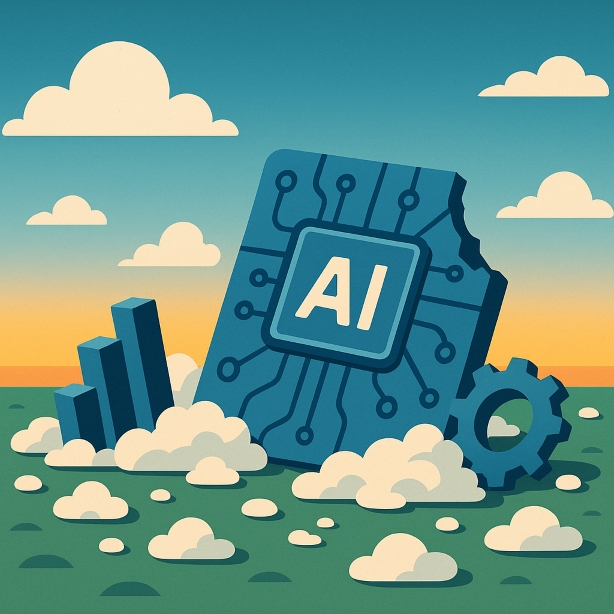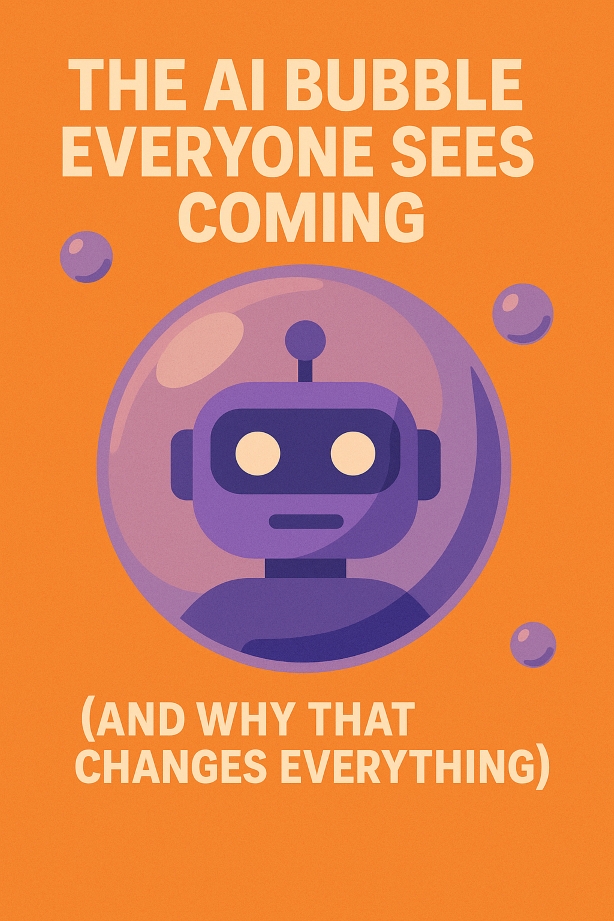We’re living through something unprecedented: a technology bubble that everyone openly calls a bubble while simultaneously pouring money into it. Sam Altman, CEO of OpenAI and arguably the person with the most to gain from AI hype, has himself compared the current moment to the dot-com bubble. He’s warning that some clients will get burned. Think about that for a second. The guy selling the shovels is telling you there might not be gold in them hills.
The numbers back up the concern. A recent MIT study found that 95% of AI investments produce no measurable returns. Not small returns. Not delayed returns. No returns. Meanwhile, tech giants are projected to spend $3 trillion on AI infrastructure over the next few years. When you combine massive capital deployment with minimal returns, you get the textbook definition of a bubble.
But here’s what makes this bubble different: everyone knows it’s happening. The Financial Times runs daily articles about it. Investors acknowledge it in earnings calls. Even the companies benefiting most from the hype openly discuss the risks. This isn’t 2008, where complex financial instruments hid the danger. This is a bubble in broad daylight.
The Companies That Went All In
The corporate world has split into distinct camps over the past two years, and their strategies reveal everything about how this bubble will eventually resolve.
First, you have the True Believers. Microsoft didn’t just invest in OpenAI; they restructured their entire product strategy around it. Every Microsoft product now has Copilot integration, whether it needs it or not. Google declared a “code red” and rushed Bard (now Gemini) to market. Meta pivoted so hard toward AI that they’re giving away powerful models for free just to stay relevant.
Then there are the Panic Buyers. These are the Fortune 500 companies that heard “AI” and immediately understood it as “cost reduction.” They’re implementing chatbots that frustrate customers, “AI-powered” analytics that just run basic statistical models, and machine learning systems that somehow manage to be both more expensive and less effective than the human processes they replaced. They’re not investing in AI; they’re investing in the appearance of AI innovation.
The Infrastructure Players represent the only clear winners so far. NVIDIA’s market cap has exploded because, regardless of whether AI delivers on its promises, everyone needs chips. Amazon, Google, and Microsoft are building data centers at unprecedented scale. These companies are selling the picks and shovels, and in a gold rush, that’s historically been the only guaranteed profitable position.
Finally, there are the Quiet Competents. These companies have been using machine learning effectively for years without fanfare. They’re optimizing supply chains, detecting fraud, and improving manufacturing processes. They don’t issue press releases about their “AI transformation” because to them, it’s just technology solving business problems. When the bubble pops, they’ll keep humming along because their AI actually does something.
The Companies Sitting This One Out
The holdouts fall into their own fascinating categories, each representing a different bet about the future.
Some companies are strategically waiting. They watched the dot-com bubble and learned that the best acquisitions happen during the bust. Why spend billions developing your own AI when you can buy the survivors for pennies on the dollar in 18 months? These companies aren’t anti-AI; they’re anti-bubble pricing.
Others are paralyzed by the complexity. AI isn’t like previous technology waves where you could just buy software and train your employees. It requires data infrastructure, new skill sets, and fundamental process changes. For companies without strong technical leadership, the barrier to meaningful entry is insurmountable. They’re not choosing to sit out; they’re stuck on the sidelines.
The most interesting group might be the skeptics who’ve done the math. They’ve looked at their business model and concluded that AI, at least in its current form, doesn’t actually solve their problems. A local bakery doesn’t need a large language model. A boutique consulting firm’s value comes from human relationships, not automated responses. These businesses might be right that AI isn’t relevant to them, or they might be the next Blockbuster, convinced that streaming would never replace physical stores.
After the Foam

History suggests this ends one of two ways. Either we get a dramatic crash that wipes out the speculators while leaving useful infrastructure behind (the dot-com model), or we get a long, slow deflation as reality gradually replaces hype (the Japanese asset bubble model).
The dot-com comparison is instructive but imperfect. When that bubble burst, we were left with fiber optic cables, data centers, and trained engineers that became the foundation for Web 2.0. The infrastructure outlasted the hype. The same will likely happen here. Even if generative AI proves to be overhyped, the GPU clusters, the training techniques, and the renewed focus on data quality will find other uses.
What’s different this time is the concentration of power. The dot-com bubble had thousands of small players; this bubble has maybe a dozen companies that matter. OpenAI, Anthropic, Google, Meta, Microsoft, and a few others control the core technology. When consolidation comes, it won’t be through mass bankruptcy but through acquisition and abandonment.
The companies that survive won’t necessarily be the ones with the best technology. They’ll be the ones that figured out the unit economics. The dot-com era taught us that eyeballs don’t equal revenue. The AI era is teaching us that intelligence doesn’t equal value. The winners will be boring: companies that use AI to make existing processes 10% more efficient, not companies trying to replace entire industries.
For businesses watching from the sidelines, the question isn’t whether to invest in AI. It’s whether to invest in the current instantiation of AI at current prices with current capabilities. The technology is real. The improvements are real. But the timeline for return on investment? That’s where the bubble lives.
The most likely scenario is neither apocalypse nor revolution. It’s a gradual recognition that AI is a powerful tool with specific use cases, not a universal solution to all business problems. The companies that understand this, whether they invested early or waited, will be the ones standing when the music stops.
The real tragedy won’t be the money lost by speculators. It will be the genuine innovations delayed or abandoned because they got buried under the hype. Somewhere right now, a team is building something transformative with AI, but they can’t get attention because they’re not promising to replace all human workers by Q3.
That’s the thing about bubbles. They don’t just inflate prices. They distort priorities, misallocate resources, and drown out reasonable voices. The question isn’t whether we’re in an AI bubble anymore. The question is what we’re going to build with the pieces when it pops.


Leave a Reply
You must be logged in to post a comment.